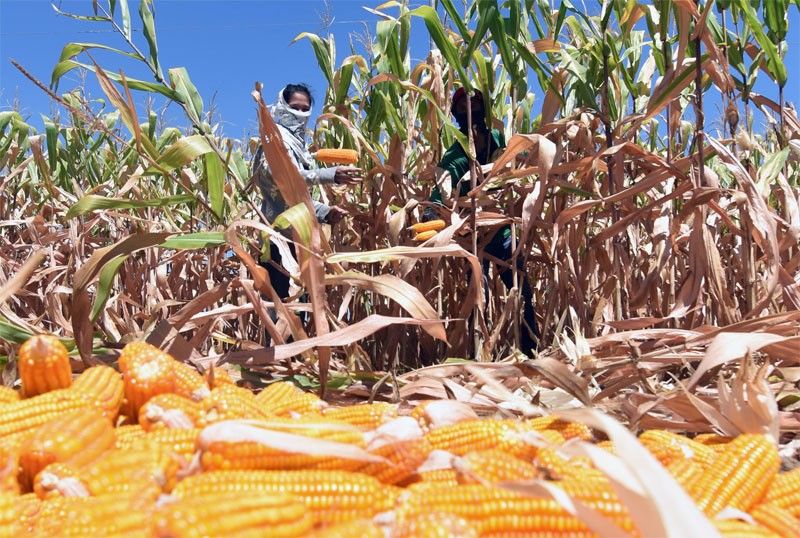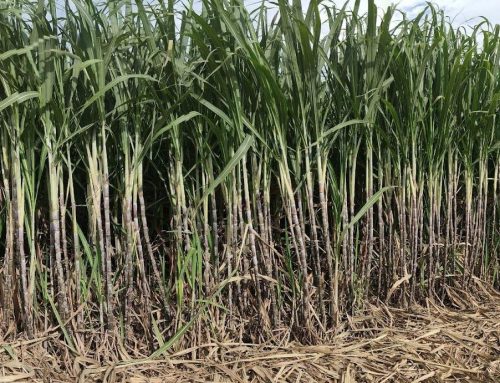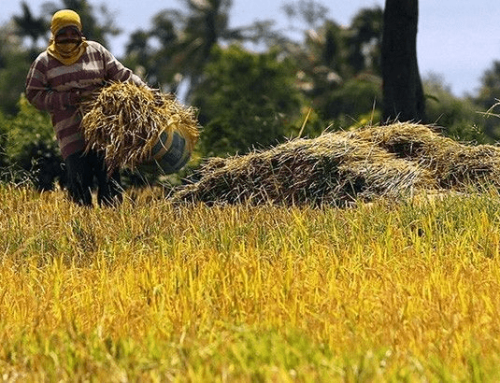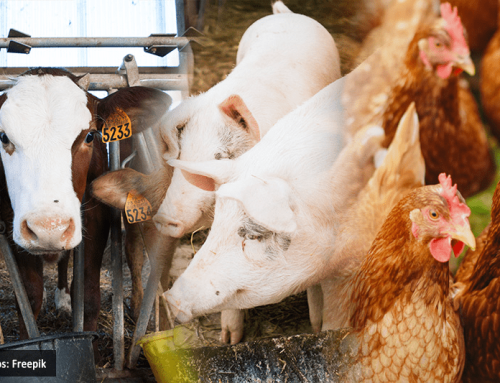In this Article
Discover the Q2 trends in corn production and prices, considering the effects of fall armyworm and emerging locust infestations. Explore government responses and the initiatives to address the fall armyworm infestation.

Q2 Supply and Price Trend
On August 14, 2024, the Philippine Statistics Authority (PSA) reported a significant decrease in corn production for the second quarter (Q2) of 2024. Production dropped by 20.35%, from 1.47 million metric tons (MT) in Q2 2023 to 1.17 million MT in Q2 2024. The decline was mainly due to El Niño, with additional impacts from tropical cyclones and fall armyworm (FAW) infestations.
The combination of El Niño and FAW damage led to a slight decrease in the farmgate price of corn grains, from Php 19.97 per kilogram (kg) in Q2 2023 to Php 19.85 per kg in Q2 2024. However, the reduced corn supply pushed the average retail price of corn products up by 5.75%, from Php 54.10 per kg in Q2 2023 to Php 57.30 per kg in Q2 2024. The table below shows the retail price trends for corn products:
Table 1. Trends in Retail Prices of Corn Products per Kilogram for Q2 2024
|
Corn Product |
Q2 2023 Price |
Q2 2024 Price |
Growth Rate |
|
Corn Grain, Yellow |
38.20 |
43.50 |
13.79% |
|
Corn on the Cob, Native |
52.80 |
56.00 |
6.05% |
|
Corn on the Cob, Sweet Corn |
65.30 |
67.70 |
3.61% |
|
Corn on the Cob, White |
53.20 |
56.00 |
5.27% |
|
Corn on the Cob, Yellow |
61.10 |
63.10 |
3.18% |
|
Average |
54.10 |
57.30 |
5.75% |
Mr. Danilo Fausto, President of the Philippine Chamber of Agriculture and Food Inc. (PCAFI), warned that the reduced supply of local corn could drive up animal feed costs, potentially increasing meat prices, particularly for chicken, eggs, and pork. PCAFI has urged the government to improve corn output by enhancing postharvest facilities like dryers and millers.
Fall Armyworm (FAW) Infestation
The fall armyworm (FAW), locally known as “Harabas,” has severely impacted corn production by causing stunting and destruction of tassels and kernels, reducing grain quality and yield. The infestation has been reported in 12 regions, including Ilocos, Cagayan Valley, Central Luzon, CALABARZON, MIMAROPA, Bicol, Western Visayas, Eastern Visayas, Zamboanga Peninsula, Northern Mindanao, SOCCSKSARGEN, and CARAGA, with Western Visayas, particularly Negros Occidental, being the most affected.
As of August 16, 2024, the Department of Agriculture (DA) reported that FAW had affected 5,279 farmers and 3,237 hectares (Ha) of corn, with 2,820 hectares expected to recover. The infestation has damaged 734 MT of corn, resulting in losses of Php 57.03 million. The United States Department of Agriculture-Foreign Agricultural Service in Manila (USDA-FAS Manila) projects a 2.38% decline in corn production for the marketing year (MY) 2024-2025, with production expected to drop from 8.4 million MT to 8.2 million MT.
Emerging Locust Infestation
On August 14, 2024, agriculture technicians in Negros Oriental began efforts to control locust infestations in corn fields in Siaton and Pamplona. Led by DA-Provincial Agriculture Technology Coordinating Office (PATCO) chief Alejandro Rafal Jr., the team applied insecticides and introduced Trichogramma, a biocontrol agent, to target locust larvae. Initial reports indicate minimal damage in Siaton, with only 5 Ha affected. Monitoring is ongoing to prevent locusts from developing into larger, more destructive swarms.
The FAW and locust infestations are expected to strain corn supply further, reducing yields and increasing corn product prices. Consumers may face higher costs for corn-based goods and animal feeds, impacting overall food prices. Farmers in affected regions will experience diminished crop quality and yield, leading to financial losses. This situation highlights the urgent need for government support and innovative solutions in pest management and crop resilience.
Initiatives Against Armyworm Infestation
- Government Response
The DA has implemented several interventions to combat FAW infestations, including distributing biocontrol agents and insecticides, maintaining a buffer stock of recommended insecticides, and training on pest management strategies. The Bureau of Plant Industry (BPI) has introduced management strategies such as inspection, quarantine, destruction of infested material, early planting, weed management, proper fertilization, irrigation, cultivation, crop rotation, and avoiding adjacent sequential planting. On August 15, 2024, the Office of the Provincial Agriculturist (OPA) of Negros Occidental reported procuring neem oil-based and nimbecidine insecticides from the DA Regional Crop Protection Center (RCPC) and BPI.
- DOST-PCAARRD Initiatives
- Carrageenan Plant Growth Promoter
To address the issue of armyworm infestation, the Department of Science and Technology-Philippine Council for Agriculture, Aquatic and Natural Resources Research and Development (DOST-PCAARRD) funded various projects. One of these is the project titled “Field Verification of Carrageenan Plant Growth Promoter (PGP) for Enhanced Growth and Induced Pest and Disease Resistance in Rice and Corn” led by Dr. Gil Magsino from the National Crop Protection Center (NCPC) College of Agriculture and Food Science (CAFS). The project marked the beginning of this collaborative initiative involving DOST-PCAARRD, the Department of Agriculture (DA), the National Crop Protection Center (NCPC) of the University of the Philippines Los Baños (UPLB), and DA/DOST regional offices across several regions. The project aims to enhance crop resilience and productivity by field-testing carrageenan PGP in key rice and corn-producing areas.
A primary focus of the project is evaluating the effectiveness of carrageenan PGP in improving resistance to the armyworm, a major pest affecting corn production. Initial results indicate a significant impact, with a 25% increase in rice yield reported in Region 6 during the 2018 Wet Season and a 34% increase in Region 9 during the 2019 Dry Season. The project also aims to reduce the incidence of armyworms and other pests, including green leafhoppers, brown planthoppers, and rice stem borers. Dr. Magsino emphasized that carrageenan PGP is expected to lower farmers’ reliance on chemical pesticides, potentially leading to increased crop yields and higher profits by mitigating the threat posed by these pests.
- Nanobiopesticide
Another DOST-PCAARRD-funded project, led by Dr. Danila Paragas of Central Luzon State University (CLSU), has developed a nanobiopesticide that has shown exceptional efficacy against armyworm larvae. During a recent review meeting in Nueva Ecija, the nanobiopesticide was demonstrated to achieve a 100% mortality rate within 48 hours. The formulation, which combines over 11 plant extracts and nanoparticles, achieved a 90% mortality rate for 1st instar larvae and 100% for 2nd to 3rd instar larvae in laboratory trials. Although this nanobiopesticide has only been tested on onions so far, its promising results could offer a sustainable solution to combat armyworm infestations and potentially revolutionize pest management practices in the Philippines.
References: Guadalquiver, N. (2024, August 15). NegOcc sustains aid to corn farmers as armyworm damage hits P50M. Philippine News Agency. Retrieved August 15, 2024 from https://www.pna.gov.ph/articles/1231188
Lanceras, R.E.. (2019, DEcember 13). Carrageenan PGP for Rice and COrn Project nears Completion. DOST-PCAARRD Portal. Retrieved August 20, 2024 from https://pcaarrd.dost.gov.ph/index.php/quick-information-dispatch-qid-articles/carrageenan-pgp-for-rice-and-corn-project-nears-completion
Partlow, M.J. (2024, August 14). DA steps up measures vs locust infestation in Negros Oriental. Philippine News Agency. Retrieved August 14, 2024 from https://www.pna.gov.ph/articles/1231187
Pelonia, A. (2024, August 15). Dry spell slashes corn output by 20% in Q2. Business Mirror. Retrieved August 15, 2024 from https://businessmirror.com.ph/2024/08/15/dry-spell-slashes-corn-output-by-20-in-q2/
Pelonia, A. (2024, August 19). Fall armyworms damage corn in W. Visayas. Business Mirror. Retrieved August 19, 2024 from https://businessmirror.com.ph/2024/08/19/fall-armyworms-damage-corn-in-w-visayas/
PSA. (2024, August 14). Palay and Corn: Volume of Production in Metric Tons by Ecosystem/Croptype, by Quarter, by Semester, by Region and by Province, 1987-2024. OpenStat. Retrieved August 14, 2024 from https://openstat.psa.gov.ph/PXWeb/pxweb/en/DB/DB__2E__CS/0012E4EVCP0.px/?rxid=bdf9d8da-96f1-4100-ae09-18cb3eaeb313
PSA. (2024, August 14). Cereals: Retail Prices of Agricultural Commodities by Geolocation, Commodity, Year and Period. OpenStat. Retrieved August 14, 2024 from https://openstat.psa.gov.ph/PXWeb/pxweb/en/DB/DB__2M__2018/0042M4ARA01.px/?rxid=bdf9d8da-96f1-4100-ae09-18cb3eaeb313
Panganiban, J. N. R. (2018, March 14). FIELD TESTING OF CARRAGEENAN PGP IN MAJOR RICE AND CORN PRODUCING REGIONS OFFICIALLY LAUNCHED. DOST-PCAARRD Portal. Retrieved August 20, 2024 from https://www.pcaarrd.dost.gov.ph/index.php/quick-information-dispatch-qid-articles/field-testing-of-carrageenan-pgp-in-major-rice-and-corn-producing-regions-officially-launched








